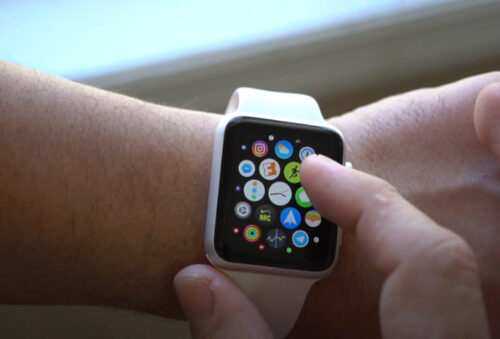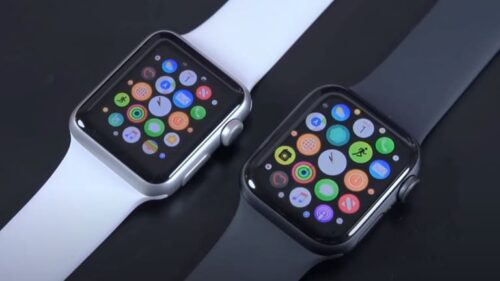
The Influence of Dance Styles on Jazz’s Cultural Transformation
1. The Role of Specific Dance Styles in Shaping Jazz’s Artistic Identity
a. From Charleston to Lindy Hop: Early Dance Influences on Jazz Expression
The early 20th century witnessed the emergence of energetic and improvisational dance forms such as the Charleston and Lindy Hop, which became synonymous with the vibrant jazz scene of the Harlem Renaissance. These dances emphasized syncopation, rhythmic improvisation, and social interaction, mirroring jazz’s own improvisational spirit. The Charleston, popularized in the 1920s, introduced a lively, syncopated movement vocabulary that complemented jazz’s rhythmic complexity. Subsequently, Lindy Hop evolved in the late 1920s and 1930s as a more athletic and acrobatic dance, pushing the boundaries of movement and encouraging dancers and musicians alike to experiment and innovate, thus fostering a deeper artistic integration between dance and jazz music.
b. The Impact of Swing and Tap Dance on Jazz Rhythm and Movement
Swing dance, particularly the Lindy Hop and its derivatives, became intertwined with the swing era’s jazz rhythms, translating musical syncopation into dynamic movement. Tap dance, with its emphasis on percussive footwork, contributed to the rhythmic articulation of jazz performances. Tap dancers like Bill “Bojangles” Robinson and the Nicholas Brothers exemplified how intricate footwork could serve as a visual extension of jazz’s rhythmic complexity. These dance forms reinforced the importance of rhythm and timing, influencing jazz musicians to incorporate more nuanced syncopation and rhythmic improvisation into their compositions and performances.
c. How Latin and African Dance Forms Transformed Jazz Performances
The infusion of Latin dances such as the mambo, cha-cha, and Afro-Cuban rhythms introduced new percussive textures and dance movements into jazz. African dance traditions, with their emphasis on polyrhythms, call-and-response patterns, and expressive gestures, significantly shaped jazz’s rhythmic foundation. Artists like Dizzy Gillespie and Chano Pozo collaborated to blend Afro-Cuban percussion with jazz, leading to the development of Latin jazz. This cross-cultural exchange expanded jazz’s expressive vocabulary, making it more rhythmically diverse and culturally inclusive, thereby broadening its artistic scope and appeal.
2. Dance as a Catalyst for Jazz Innovation and Genre Development
a. The Symbiotic Relationship Between Dance Trends and Jazz Evolution
Throughout jazz history, dance trends have often propelled musical innovation. For instance, the popularity of swing dance in the 1930s and 1940s spurred jazz musicians to develop larger ensembles and more intricate arrangements to match the energetic dance styles. Conversely, jazz’s improvisational nature inspired dancers to choreograph new routines, creating a continuous cycle of mutual influence. This relationship exemplifies how dance and music co-evolved, with each pushing the other toward new artistic frontiers.
b. Case Studies: Dance Styles that Pushed Jazz into New Artistic Directions
| Dance Style | Jazz Innovation |
|---|---|
| Lindy Hop | Led to big band arrangements with extended solos and improvisation |
| Afro-Cuban dances | Brought complex rhythms into jazz, inspiring Latin jazz genres |
| Tap dance | Enhanced rhythmic phrasing and percussive techniques in jazz |
c. The Role of Dance in Breaking Cultural Barriers Within Jazz Communities
Dance has historically served as a unifying force, bridging racial, cultural, and social divides within jazz communities. The shared language of movement fostered inclusive environments where diverse groups could collaborate and innovate. For example, the Harlem Renaissance’s dance scenes created spaces for African American cultural expression, challenging segregation and fostering cross-cultural appreciation. As jazz evolved globally, dance became a vital medium for cultural exchange, amplifying jazz’s role as a universal language that transcended barriers.
3. Socio-Cultural Dynamics of Dance and Jazz Interactions
a. Dance Styles as Vehicles for Cultural Identity and Resistance
For marginalized communities, dance often embodied resistance and cultural pride. The Charleston and swing dances became symbols of liberation during the Jazz Age, challenging societal norms and expressing joy amidst adversity. African dance traditions incorporated into jazz performances served as affirmations of cultural identity. These dance forms provided a platform for marginalized voices to assert their presence and influence mainstream culture, embedding social and political messages within artistic expression.
b. The Spread of Dance Influences Through Migration and Media
Migration patterns, especially during the Great Migration, facilitated the dissemination of dance styles across the United States and beyond. Media outlets, including radio and film, further amplified these influences, allowing dance trends to reach wider audiences. Notable examples include the dissemination of the Lindy Hop through Hollywood films and radio broadcasts, which popularized jazz dance globally and inspired local adaptations in different cultural contexts.
c. How Dance Styles Contributed to Jazz’s Global Cultural Footprint
As jazz migrated internationally, dance styles acted as cultural ambassadors, promoting jazz’s vitality worldwide. Latin dances like the mambo gained popularity in Europe and Asia through jazz festivals and dance competitions, fostering cross-cultural collaborations. These exchanges enriched jazz with diverse rhythmic and movement vocabularies, making it a truly global phenomenon rooted in a rich tapestry of cultural influences.
4. Choreography and Performance Practice: Embodying Jazz’s Cultural Shifts
a. Evolving Dance Movements Reflecting Jazz’s Changing Social Contexts
Dance movements have often mirrored societal shifts, from the rebellious energy of the 1920s to the more expressive and experimental forms of contemporary jazz. For example, the bebop era’s emphasis on improvisation extended into dance, leading to freer, more abstract movements. These evolutions serve as physical manifestations of jazz’s ongoing dialogue with social change, reflecting themes of freedom, resistance, and innovation.
b. The Integration of Dance in Jazz Performance Spaces and Festivals
Modern jazz festivals increasingly incorporate dance performances, workshops, and interactive sessions, emphasizing the symbiosis between movement and music. This integration enhances audience engagement and fosters a holistic appreciation of jazz as a multi-sensory experience. Notable events like the Monterey Jazz Festival and the New Orleans Jazz & Heritage Festival exemplify how dance remains integral to jazz performance practice.
c. The Influence of Dance on Jazz’s Visual and Aesthetic Identity
Dance has significantly shaped jazz’s visual identity, influencing fashion, stage design, and performance styles. The flamboyant costumes and energetic movements of swing dancers contributed to jazz’s aesthetic appeal, reinforcing its image as a lively, expressive art form. Contemporary jazz performances continue to draw on dance-inspired visuals, blending tradition with modern innovation.
5. Contemporary Perspectives: Reimagining Jazz and Dance Interplay
a. Modern Dance Styles and Their Impact on Jazz Fusion Genres
Contemporary dance styles such as hip-hop, contemporary, and urban dance have invigorated jazz fusion genres like acid jazz and nu jazz. These influences have introduced new movement vocabularies, emphasizing improvisation, body isolations, and social themes. Artists like Robert Glasper and Esperanza Spalding incorporate dance-inspired choreography and movement into their performances, highlighting the ongoing evolution of jazz as a dynamic, interdisciplinary art form.
b. Digital Media and the Revival of Dance-Driven Jazz Expressions
Digital platforms enable jazz dancers and musicians to collaborate across borders, remixing traditional dance moves with digital effects and innovative choreography. Viral dance challenges and online tutorials foster community engagement, reviving interest in dance-driven jazz expressions. This digital revival ensures that the symbiotic relationship between dance and jazz remains vital in contemporary artistic practice.
c. The Role of Dance in Shaping Jazz’s Future Cultural Narratives
Looking ahead, dance will continue to be a vital tool in shaping jazz’s cultural narratives, especially as artists explore themes of identity, social justice, and global interconnectedness. Interactive dance performances and multimedia projects will likely expand jazz’s reach, ensuring its ongoing relevance in a rapidly changing cultural landscape.
6. Bridging Back to the Broader Evolution of Jazz and Dance in Cultural History
a. How Dance-Driven Transformations Have Continued to Influence Jazz’s Development
The continuous integration of dance into jazz has driven innovation, from the swing era to modern fusion genres. Each wave of dance influence has expanded jazz’s expressive boundaries, fostering new improvisational techniques and stylistic elements that reflect societal changes.
b. The Persistent Interdependence of Dance and Jazz in Cultural Identity Formation
Dance remains a powerful symbol of cultural identity within jazz communities, serving as both a form of resistance and celebration. Its role in fostering social cohesion and cultural pride underscores the enduring interdependence of movement and music in shaping collective identities.
c. Reflecting on the Historical Trajectory: From Early Dance Influences to Contemporary Innovations
The historical journey of jazz and dance reveals a dynamic interplay that has continually enriched both art forms. From the Charleston to digital media-driven performances, this evolution highlights jazz’s resilience and capacity for reinvention, rooted in its foundational dance influences. For a comprehensive exploration of this rich history, you can revisit The Evolution of Jazz and Dance in Cultural History.





